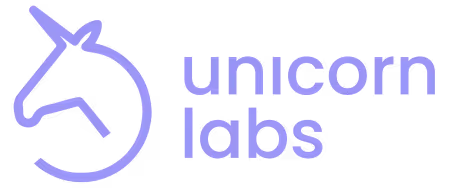What to Do When People Challenge Your Ideas
Did you know negative feedback can be a good thing?
Here are a few tips to help you the next time you want to share your ideas:
Table of Contents:
1. Change your mindset
Most people consider conflict to be negative and a waste of time, but I challenge you to change your perspective.
Conflict is a good thing! It creates engagement and discussion which are essential to improving your idea and helping it to become the best it can be.
Just because someone questions your idea doesn’t mean that they disagree with you, and even if they do disagree with you, it doesn’t mean that they think your idea is invalid.
The fact that they are questioning your idea is a good sign. Why? It means they care! If they didn’t want to help you improve your idea they would just nod their head and move on to the next conversation leaving you and your idea in the dust.
Without discourse, there is no progress.
No great idea got anywhere by someone saying, “yep that’s perfect, let’s move on.”
Ideas aren’t flawless right out of the gate. They need to be refined. The best way to refine ideas is through conversation.
Discussion between more than one perspective allows you to reach the answer you’re searching for. When your idea is questioned it is being put under pressure.
Pressure is what makes your idea better. By testing your idea under smaller environments first you are able to detect and fix the flaws before you present it in a more important setting.
Conflict is not only a good thing but an essential component of creating a great idea.
2. Let Your Guard Down, Listen
Negative conflict is important to avoid when discussing ideas.
Negative conflict like gossip or office politics happens when people share assumptions as truth. Instead, we want to establish trust and keep conflict engaging.
To create trust, we need to listen to each other in an empathetic way. This means that we don’t throw up our defenses right away, instead, we take a step back and hear the person out, we have to honestly consider what this person has to say.
We chew on their words.
Through listening, we create an open, honest and safe space that creates the perfect environment for positive and productive conflict.
When we listen to what the other person is saying we pursue their perspective of our idea. New perspectives are formed from open and honest communication.
Without new perspectives, we can never improve our idea.

3. Find the New Perspective
Once you’ve absorbed the feedback, you need to apply it to your original idea.
Engaging your idea with others is exciting! It brings out passion and commitment and sometimes even new and essential connections.
When people question your idea you need to think of it as a way to allow your idea to grow. You can now see different interpretations of how your idea can improve and come to life.
With new perspectives illuminating ideas you can now ask new questions and come to different conclusions. You can figure out how to fix the kinks and iron out the wrinkles of your idea. New perspectives from different people allow you to find new conclusions.
With others you can reach the answers you couldn’t on your own.
4. Connect What We Already Know
The last step in healthy conflict practice is connecting your ideas to the familiar.
You want to give people the chance to know your idea and know it well. Allow them to mull it over in their own minds and talk about it with others.
You need to sprinkle your idea everywhere you can.
Casually bring it up at the water cooler, or bring it up to your friends at your next game night. Any opportunity you get you to mention your idea, do it! By always sprinkling your idea, you are allowing it to become commonplace.
Once your idea becomes everyday knowledge you want to connect it to something that everybody knows. For example, when the writers of the Lion King were pitching the movie plot to producers Disney originally did not want to buy-in because it seemed too dark. However, once the writers connected the plot to Hamlet, the producers loved it. Why? Because they could connect it to something they already knew.
People tend to be afraid of the unknown, but if you connect your idea to something familiar you take off the mask and they recognize it as their sweet old grandma instead of the Big Bad Wolf.
You now have the tool kit to master negative feedback. The next time someone questions your idea don’t push their feedback away, embrace it! Who knows, it could lead you to your next EUREKA moment. Don’t miss the chance!
Now that you have mastered how to manage conflict - what is your plan of action for making an impact with your team?
Now that you have mastered how to create an environment of empowerment via the 3-P's - what is your plan of action for making an impact with your team?
Developing Your Communication, Empathy and Emotional Intelligence skills is start. What is your plan of action for implementing your learnings within your your team?
Now that you understand the differences in these titles - what is your plan of action for what you learned?
Assessing your team's behaviors is a start - but do you have a plan of action for the results?
Now that you have mastered the art of decision making - what is your plan of action for making an impact with your team?
.png)
A DISC Behavior Assessment is the best way to understand your team's personalities.
Each DISC Assessment includes a Self Assessment and DISC Style evaluation worksheet

-23.avif)







.webp)









